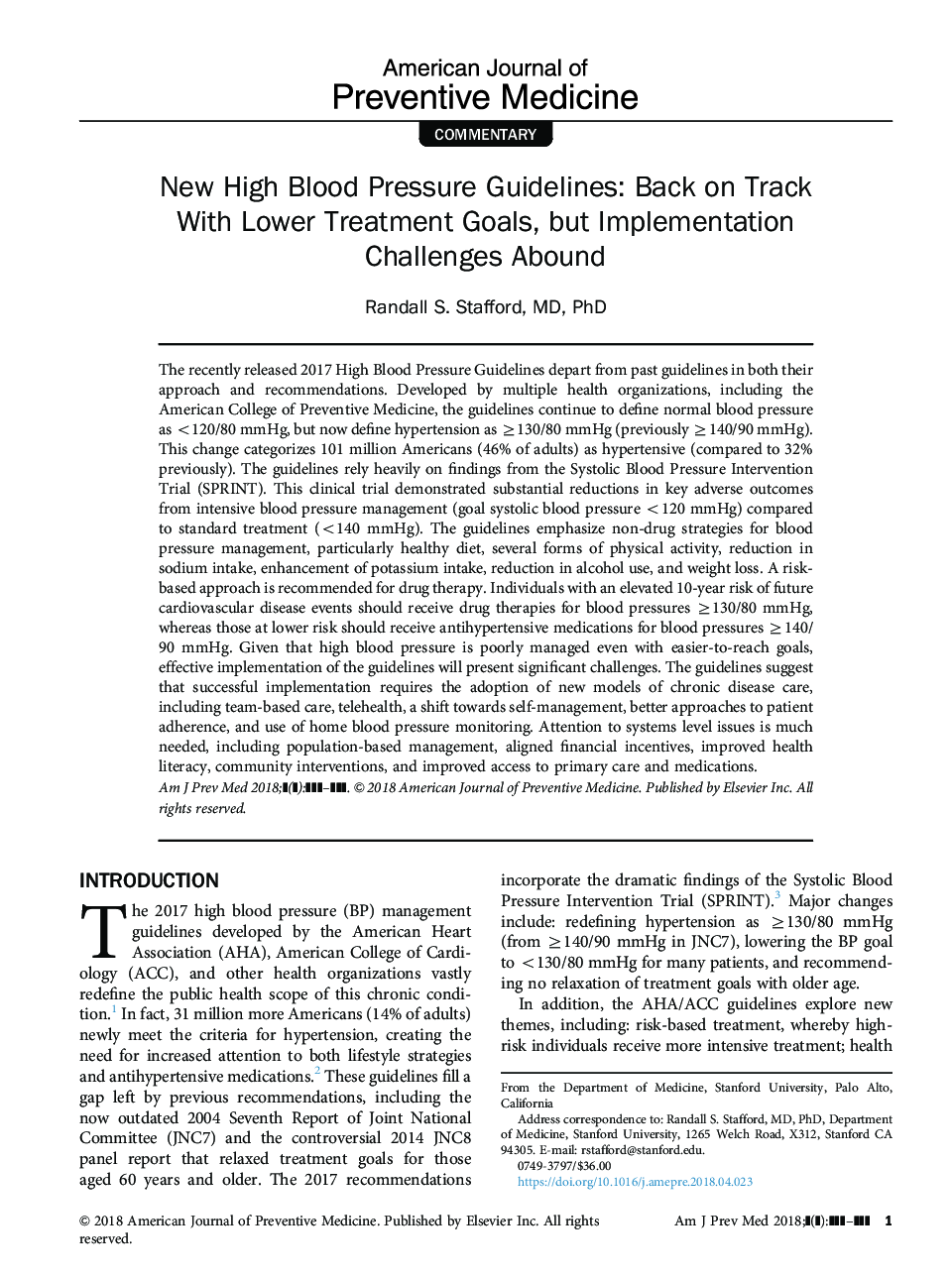| Article ID | Journal | Published Year | Pages | File Type |
|---|---|---|---|---|
| 10222468 | American Journal of Preventive Medicine | 2018 | 4 Pages |
Abstract
The recently released 2017 High Blood Pressure Guidelines depart from past guidelines in both their approach and recommendations. Developed by multiple health organizations, including the American College of Preventive Medicine, the guidelines continue to define normal blood pressure as <120/80 mmHg, but now define hypertension as â¥130/80 mmHg (previously â¥140/90 mmHg). This change categorizes 101 million Americans (46% of adults) as hypertensive (compared to 32% previously). The guidelines rely heavily on findings from the Systolic Blood Pressure Intervention Trial (SPRINT). This clinical trial demonstrated substantial reductions in key adverse outcomes from intensive blood pressure management (goal systolic blood pressure <120 mmHg) compared to standard treatment (<140 mmHg). The guidelines emphasize non-drug strategies for blood pressure management, particularly healthy diet, several forms of physical activity, reduction in sodium intake, enhancement of potassium intake, reduction in alcohol use, and weight loss. A risk-based approach is recommended for drug therapy. Individuals with an elevated 10-year risk of future cardiovascular disease events should receive drug therapies for blood pressures â¥130/80 mmHg, whereas those at lower risk should receive antihypertensive medications for blood pressures â¥140/90 mmHg. Given that high blood pressure is poorly managed even with easier-to-reach goals, effective implementation of the guidelines will present significant challenges. The guidelines suggest that successful implementation requires the adoption of new models of chronic disease care, including team-based care, telehealth, a shift towards self-management, better approaches to patient adherence, and use of home blood pressure monitoring. Attention to systems level issues is much needed, including population-based management, aligned financial incentives, improved health literacy, community interventions, and improved access to primary care and medications.
Related Topics
Health Sciences
Medicine and Dentistry
Public Health and Health Policy
Authors
Randall S. MD, PhD,
